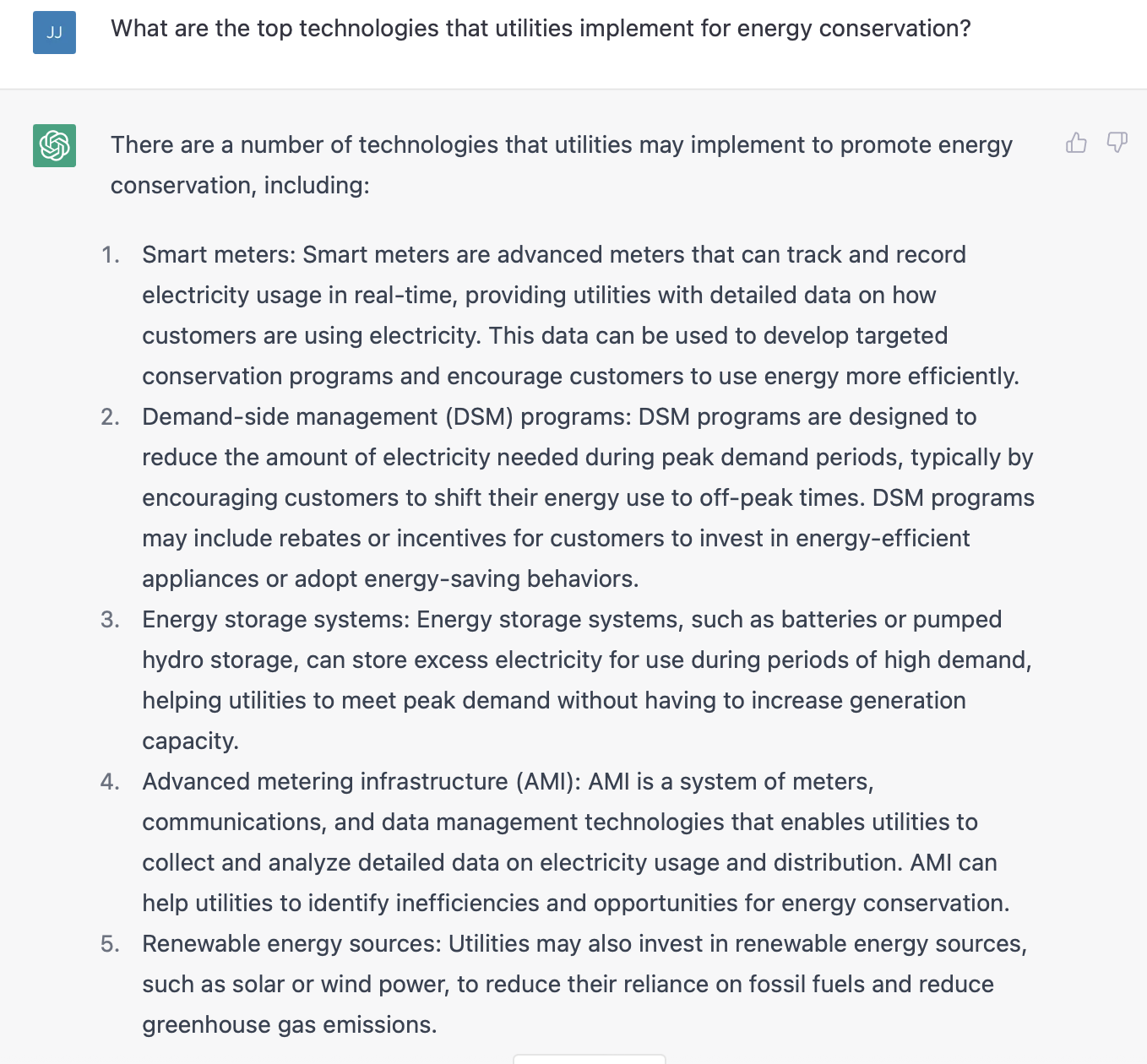For fun: Can ChatGPT's AI answer utility customer questions about cleantech?
What are utility CEOs' clean electrification priorities? That was one of several questions to see how OpenAI could improve utility customer service. The result? Free AI gave plausible answers.
Canva
ChatGPT, based on OpenAI’s GPT-3 artificial intelligence (AI) engine, has become the rage in recent press articles such as:
“Meet GPT-3. It Has Learned to Code (and Blog and Argue)” New York Times.
“What is ChatGPT, the viral social media AI?” The Washington Post.
“OpenAI Chatbot So Good It Can Fool Humans, Even When It’s Wrong” Bloomberg.
ChatGPT has also become the run-away leader in publicly available AI writing. The online App composes complete sentences and paragraphs based on user prompts. And its answers are delivered in an authoritative, conversational tone.
Users can keep the conversation going to drill down into follow-up questions. According to OpenAI, ChatGPT is optimized for dialogue and will ”admit its mistakes, challenge incorrect premises, and reject inappropriate requests.”
But will ChatGPT replace business analysts and writers soon? Not yet (note, this writer breathes a sigh of relief 🙄). However, the writing is done in seconds in a clear writing style. Compared to human authors, there is no writing, editing, rewriting, and more rewriting to get to a coherent, easy-to-read document.
Testing ChatGPT on utility and clean energy questions
Let’s look at an AI conversation thread about the clean energy transition from an electric utility perspective.
1. What are the utility CEO’s top worries?
First, I wanted to know whether utility CEOs considered clean energy a top business concern. As utility industry experts might expect, ChatGPT listed ensuring reliability and safety as the first answer, followed by typical utility concerns for managing operating and maintenance costs, regulatory requirements, and shareholders’ financial expectations. The fifth concern (out of the nine listed) was adopting market changes, such as the transition to renewable resources.
2. What about utility energy conservation programs?
Ok, the renewable energy transition is important, but what about old-fashioned energy conservation? The answers were more general than I expected. Still, they covered broad themes of smart meters, demand-see management, energy storage, advanced metering (isn’t this related to smart metering), and renewable energy (not exactly an energy conservation measure).
3. Going deeper: What about Smart meters?
Let's dive into one of the above technologies, smart meters. ChatGPT’s answer is a bit bland and not on point. It’s a good try, but I give it a “D” grade.
For comparison, a Google search’s first answer link is to a Wikipedia explanation of smart meters written by people (at least for now).
4. What about solar PV technologies?
Solar PV technology, which was near and dear to me before I became a writer, is of special interest to me. For this answer, ChatGPT gave a good general overview of the different types of solar PV modules. This answer’s best use is for a high-school essay or an online chatbot on a utility’s customer service website.
5. Finally, what technologies are at the forefront of utility’s transition to clean-energy electrification?
For my last two questions, I was curious about what the AI chatbot would provide on utilities’ efforts to boost consumer electrification and cleantech innovations. Again, ChatGPT provided a general list of the major topics for utilities’ technology pursuits.
The App did not pick up esoteric topics — like advanced systems to optimize transmission grid flows for enabling more solar and wind energy deliveries.
My Take
ChatGPT is the first major integration of a conversational chatbot based on the GPT-3 version from OpenAI. Using the more advanced GPT-4, a newer version may be available by mid-next year or sooner.
ChatGPT’s first iteration shows the promise of writing and talking to AI robots.
Clay Christensen famously described how simple, early disruptive innovation could upend companies and industries. In my own experience, my first computer, a Radio Shack TRS-80, was a toy with slow, limited computing power. Compare that to the disruptive iPhone that offers more power in the palm of your hand than was available to NASA when it sent men to the moon on Apollo 11.
In the near term, I expect IT companies that serve utilities, such as Oracle AI, Accenture, and IBM AI, to continue incorporating proprietary AI for utility customer service applications. However, just like the free and open-sourced Linux was adopted by mainframe computer and commodity server manufacturers and consumer giants like Google and Apple, improved versions of OpenAI could replace proprietary AI programs soon.







